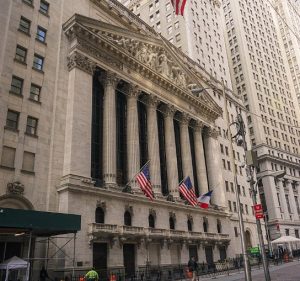Cut to migration will harm US economy – report
The Trump administration’s drive to reduce migration and deport asylum seekers will harm the US economy, according to a new report by economists from across the political divide.
A report co-authored by the by the right-leaning American Enterprise Institute (AEI) and the left-leaning Brookings Institution says that too steep a decline in immigration will prove harmful to US the economy.
The report, titled ‘Immigration Policy and Its Macroeconomic Effects in the Second Trump Administration’, comes as the Trump administration reported that the US may see negative net migration in 2025, meaning more people will leave the country than arrive.
The report, itself, projected that net migration would land between -525,000 and 115,000 in 2025, but with “zero or net negative migration” being the more likely outcome.
The report analysed the Trump administration deportation efforts, as well as his broader immigration policy, predicting lower legal permanent resident entries than in his first term and factoring in greater vetting for temporary visas, a suspended refugee program, travel bans and terminated humanitarian parole programs.
It says that given changes at the border and the regular migration system, 2.47 million to 2.76 million fewer people are expected to come to the US in 2025 than in 2024.
And the researchers said they expect around 675,000 to 1,020,000 more immigrants to leave the country than last year. 
They project these changes will reduce GDP growth by 0.3-0.4 per centage points.
“The dramatic changes in immigration policy implemented by the second Trump administration have important consequences for the macroeconomy,” the report says.
“Given drastic reductions in inflows and somewhat elevated outflows, we project that net migration is likely to be zero or negative in 2025.
“We project that immigration policy will be even more restrictive in 2026 before net migration starts to rebound in 2027 and 2028. We find that the large drop in net migration in 2025 compared with 2024 will result in significantly slower labour force growth, slower employment growth, and a decrease in GDP growth of around 0.3–0.4 percentage points.
“These macroeconomic consequences mask significant dimensions of heterogeneity. Specific industries, firms, and especially households will bear the brunt of the negative consequences of the lower number of arrivals and the greater number of immigrants leaving the country, voluntarily or involuntarily.
“It is also possible the administration’s policies will weaken the United States’ global competitiveness in a way that will have longer-run consequences beyond what we have considered here.
“Nevertheless, even focusing narrowly on the impacts of lower net migration for four years, we find measurable negative consequences of immigration restrictionism for labour force and GDP growth,” the report says.
Underpinning the report is the notion that lower immigration means a smaller labour pool – which translates to fewer people competing for the same number of jobs.
This means more employment among American citizens, but it also means fewer jobs overall.
The report argues intimates that because there are fewer people requesting services and goods in society, then there’s a comparable shrinking in the number of jobs for US-born workers.
It says that some of the other negative economic impacts that can result from a smaller labour force are the loss of highly skilled workers and a lower rate of business investment.
The AEI-Brookings report authors believe net migration might start to recover some in 2027 and 2028, as the adverse economic and political consequences of Trump’s extreme policies become clear.
Read the full report: Immigration-Policy-and-Its-Macroeconomic-Effects-in-the-Second-Trump-Administration.pdf












